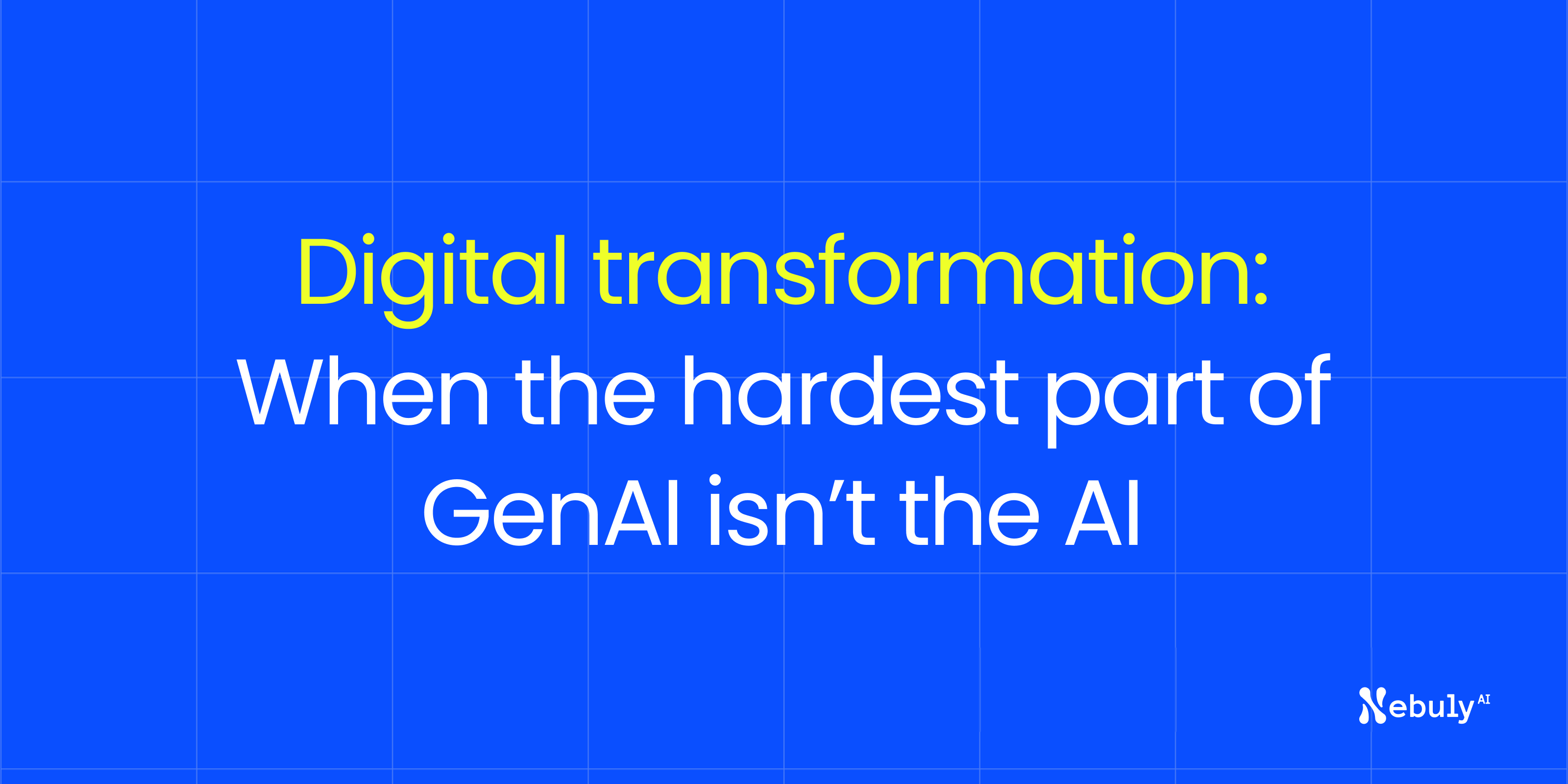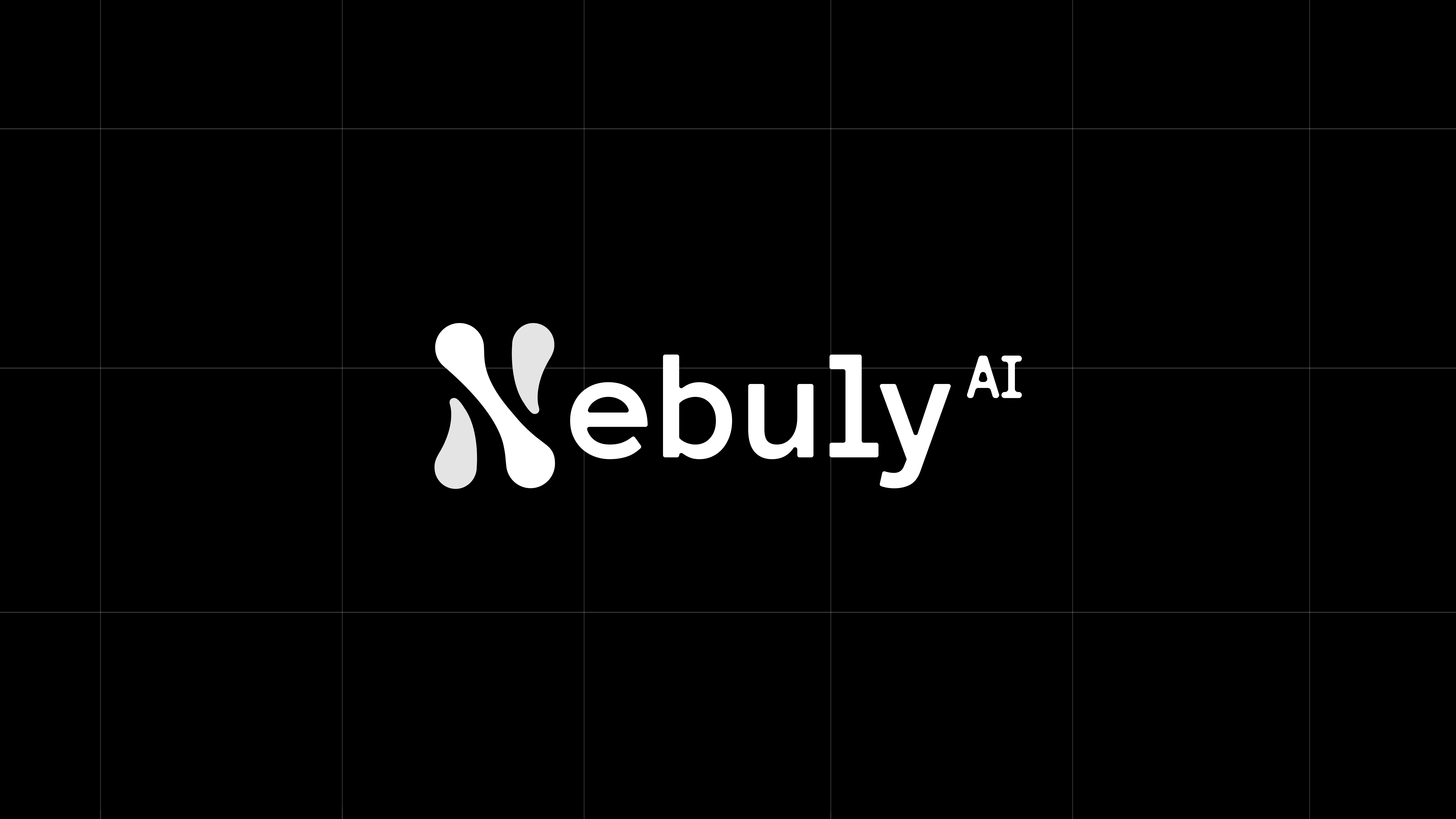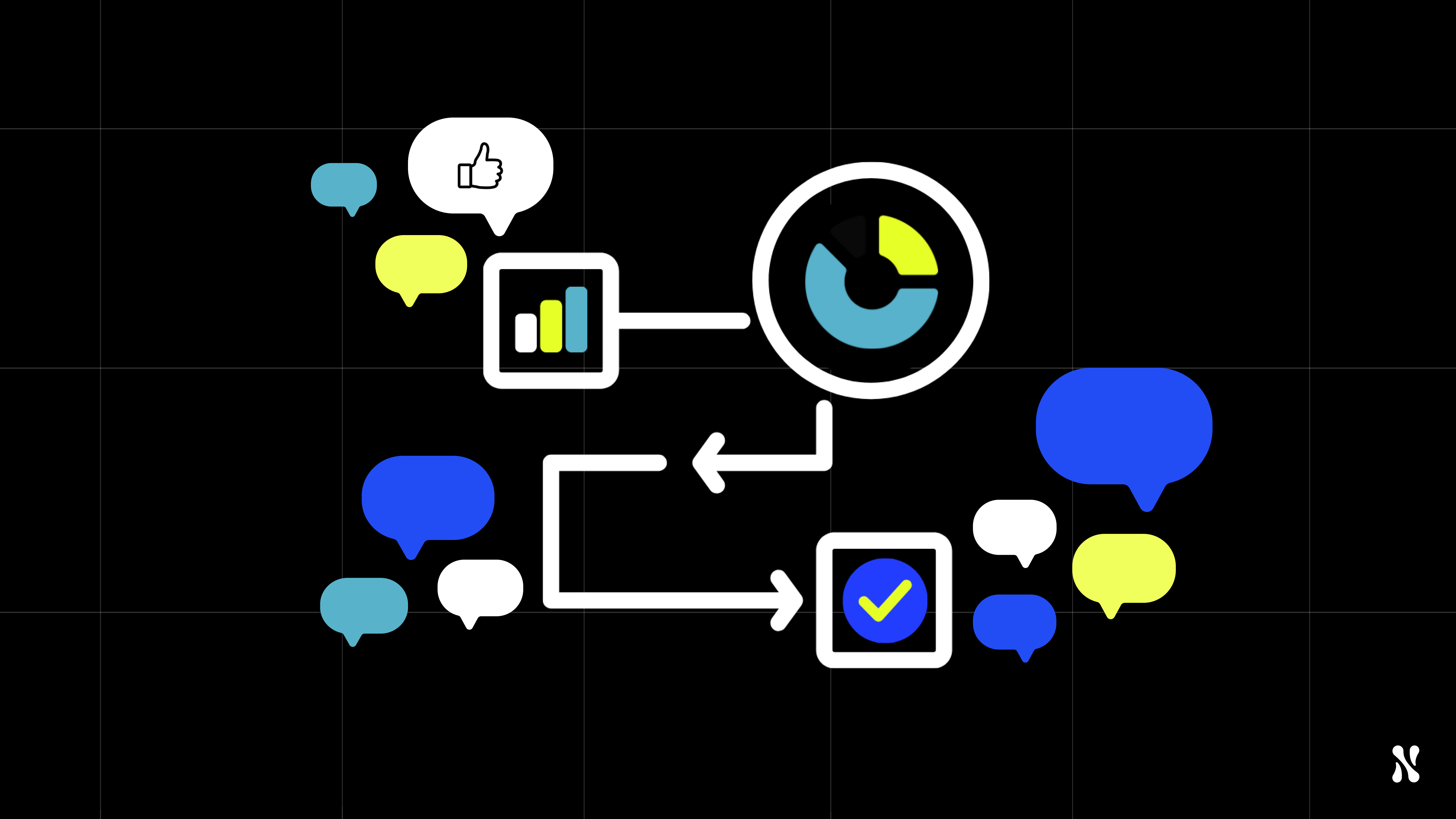Generative AI is powerful. It can save time, automate tasks, and open new ways of working. But if you’ve ever tried to roll it out across a large company, you know the truth: the hardest part of GenAI isn’t the AI itself. About two-thirds of enterprises say they can’t get their GenAI pilots into full production.
The real challenge lies in people, culture, and process. Digital transformation with AI means change: and change is never simple. Companies that succeed don’t just plug in a model. They guide employees through the shift, train them to use it well, and set up feedback loops to keep improving.
This blog looks at three of the biggest hurdles: change management, training, and feedback. Together, they explain why GenAI adoption is less about technology and more about people.
1. Change management: making the shift real
Rolling out GenAI is a transformation exercise. Employees might already use AI in their personal lives, but weaving it into everyday work is a different story. It takes structure and leadership.
What helps:
- Clear workflows. Spell out how tasks will change and why. People need to see how AI fits into their job, not just the company vision.
- Open communication. Be upfront about what AI can and can’t do. Acknowledge concerns and highlight that the goal is to support people, not replace them.
- Cultural buy-in. Celebrate teams that embrace AI and share wins openly. When leadership rewards experimentation, adoption spreads faster.
Change doesn’t happen just because the tool is there. It happens when people trust the process and see value in their daily work.
2. Training and prompt literacy: giving people the skills
“Just type a prompt” sounds easy, but in practice, good prompts are a skill. Without training, employees often get poor answers and walk away thinking the AI doesn’t work.
That’s why AI literacy matters. Companies that invest in upskilling their workforce see better adoption.
What works:
- Basics for everyone. Simple, non-technical sessions that explain what GenAI is and how to use it responsibly.
- Prompt workshops. Show how adding context, asking for structure, or refining queries improves results. Practice with real tasks makes it stick.
- Peer learning. Encourage early adopters to share prompt tips with colleagues. It spreads skills and normalizes usage.
- Continuous learning. GenAI evolves quickly. Ongoing training keeps employees confident instead of falling behind.
Prompt training may sound small, but it often makes the difference between abandoned tools and active adoption.
3. Feedback loops: learning from real use
Even when AI is live, the work isn’t done. Success depends on listening to how employees actually use it. Surveys help, but they rarely capture the full picture.
Most feedback comes from behavior itself: what people ask, where they get stuck, when they stop using the tool. Tracking this is essential to spot silent churn, when usage fades quietly without anyone noticing.
Take Iveco Group, for example. They rolled out copilots across the company. The tech side went smoothly, but leaders had no visibility into whether employees were using them or finding value. By adding user analytics, they uncovered real adoption patterns: which teams engaged, where usage dropped, and what questions employees asked most. With those insights, they could fix issues and share progress with stakeholders.
That’s the power of feedback loops. They turn guesswork into data and make improvement continuous.
Turning pilots into progress
Nearly 74% of companies say their most advanced GenAI initiatives are already meeting or beating ROI expectations, with productivity boosts of 15–30%. But rolling out GenAI is only the first step. The real work is helping people adapt, building their skills, and paying attention to how they actually use it. Ignore these, and even the smartest AI will gather dust. Focus on them, and you’ll see adoption stick and value compound over time.
If you want to see how leading enterprises are using user analytics to make GenAI adoption work in practice, check out our case studies. To go deeper, see our guide on how to measure business value from GenAI products.
Or better yet: book a demo with Nebuly. We’ll show you how to track real behavior, close feedback loops, and make your GenAI initiatives succeed for your people and your business.






